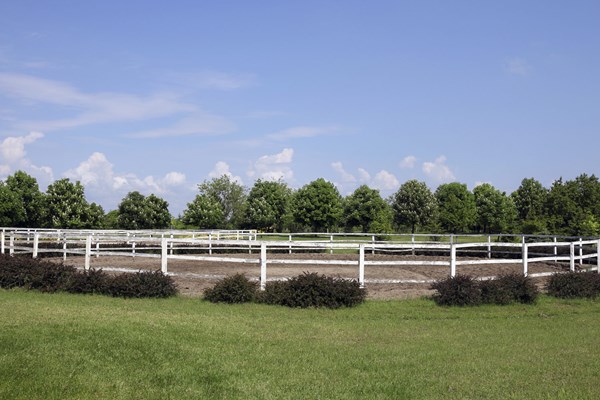 Credit: Thinkstock
Credit: ThinkstockDo you need to reconfigure your pastures, add paddocks or upgrade fencing? If you’re planning to do the work yourself, read on for tips that can save you time and money.
Plan Ahead
Properly installed fencing should keep horses on your property, and keep unwanted critters out, all the while providing accessibility, safety and convenience.
Take time to plan ahead. Sketch a simple diagram of the designated area. Decide on the number of and location of gates. “Determine if you need gates beforehand,” advised Debbie Disbrow, president of Ramm Stalls and Fencing, “it’s easier to install them in the beginning rather than later on.”
Consider walkways between large paddock areas. “Aisles between pastures will help stop damage to a separating fence line,” she added. The space should be large enough to safely lead a horse in between both sides of the fence without some other horse reaching over and nipping or annoying the horse you are leading. Also, depending on the equipment you use to move hay or clean paddocks, you might need to make the lanes large enough for your utility vehicle or compact tractor.
Prep the Site
Before digging holes or stringing fence, make sure you call the utilities and ensure you aren’t going to pound into a water pipe or dig into an electric or gas line!
Next you need to prep the area. “Start by clearing all lines to be fenced,” Disbrow suggested. Remove brush and tree roots from the fence line area.
Then, stake out the fence line. Use a string line to create straight lines for the fence. Take time to properly set corner and end posts. These provide the strength for the rest of the fence.
“All the work you do beforehand is good prep work for any type of fencing,” she added.
Stock Up
Have enough materials on site to do the job correctly. For example, purchase enough concrete to securely anchor posts into the ground.“Don’t skimp on what is needed for your fence,” she advised. “Otherwise it will fail rather fast, and that’s not because of the product itself.”
Lastly, whileit sounds simple, “read manufacturing installation instructions and ask questions if you don’t understand anything,” she concluded.


